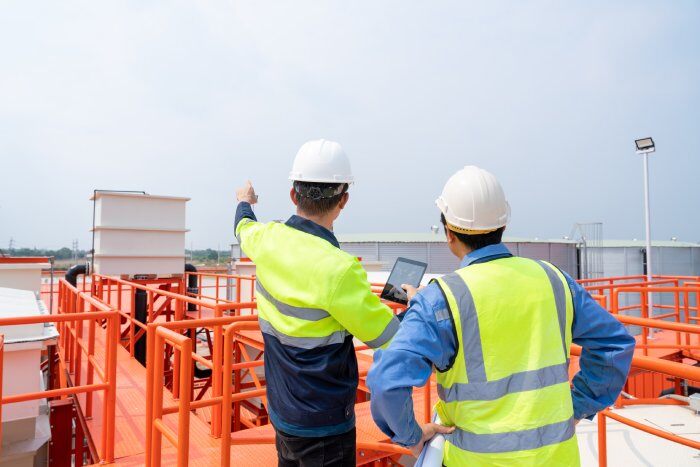
The acronym DPI refers to the concept in full "Personal Protective Equipment" and consequently the tools that the worker can use in the professional sphere with the purpose of protecting himself and secondarily the community.
We have different types of PPE based on the districts most at risk:
- eyes and face;
- respiratory tracts;
- arms, feet and legs;
- skin;
- trunk and abdomen;
- entire surface of the body;
- protective clothing.
They are further stratified into three categories:
- Category 1, includes devices useful for protecting the worker from minimal risk: harmful effect of sunlight, injury from easily reversible cleaning products, any atmospheric phenomena etc.; .
- Category 2, devices useful for preventing serious injury including death: harmful biological or chemical agents, ionizing radiation, temperatures excessively high or low for humans, electric shock and work under voltage, gunshot wounds, etc.;
- Category 3, includes injuries that cannot be classified through the first two categories such as helmet or gloves to protect against mechanical hazards to which the professional may be exposed.
Never before has the concept of personal protective equipment taken on a key role in the prevention of the spread of diseases with interhuman transmission, as in the case of the SARS-CoV-2 virus but also of multiple other infections.
The use of PPE obviously predates the pandemic in the current century by far and is regulated by Decree Law 81/08, which states in Article 74 "Personal protective equipment, hereinafter referred to as PPE, means any equipment intended to be worn and held by the worker for the purpose of protecting him against one or more risks likely to threaten his safety or health during work, as well as any complement or accessory intended for that purpose."
We can exclude from this category rescue or rescue equipment, uniforms or work clothing commonly used in the performance of professional activity, equipment used by the armed forces or more generally by the forces of law and order, self-defense tools suitable for ensuring the maintenance of public order.
It remains obvious, that the use of PPE, has as its ultimate purpose the protection of the health of the professional and consequently its use must not entail a greater risk for the same: in fact, there are categories exempt for health reasons from the use of PPE where the use of the latter entails a greater risk than the benefit derived from the same.
Of paramount importance, moreover, is that the IPD is appropriate to the working conditions in which the worker finds himself performing his professional activity as regulated in Article 76 of Legislative Decree 81/08. Compulsory use of PPE occurs when the risk cannot be avoided or sufficiently reduced by means of preventive techniques, collective means of protection, or work reorganization measures.
The areas in which PPE is widely used for the purpose of preventing health harm to the professional are many. Obviously, prevention of the spread of infection in the pandemic context was a pivotal example of the importance of appropriate use of collective and individual defense tools.
In hospitals, it was a priority measure and supported by various scientific evidences to counter SARS-CoV-2 infection early in the pandemic through the use of surgical masks and where necessary FPP2/FFP3 based on the type of contact and the risk of contracting the infection. Indeed, it emerged early on that in addition to distance (&l;1 meter), exposure time (>15 minutes), the use of PPE had a priority role in protecting the practitioner exposed to the risk of contracting infection.
The use of PPE was of paramount importance in protecting the practitioner exposed to the risk of contracting infection.
Of paramount importance is evaluating the compliance of the PPE, which must be provided along with detailed technical documentation providing information on its intended use, preventable risks, information on its design and manufacture, explanation of operation as well as regulatory references.
Responsibilities in the use of PPE fall as much on the worker as on the employer, who have the common goal of protecting individual and collective health:
- The employer must be a good communicator, explaining the reasons why to introduce this device and providing comprehensive explanations on how to use it in a simple and understandable manner so as to properly train the worker in its use.
- The worker must take care of them, use them according to the directions given, make no changes, and report defects or malfunctions.
In conclusion, personal protective equipment is a powerful weapon at the disposal of both, and if you cooperate with the common goal of health protection, the benefit obtained is an added value for the worker and for the facility in which he or she serves.
Sources
Legislative Decree 81/08




